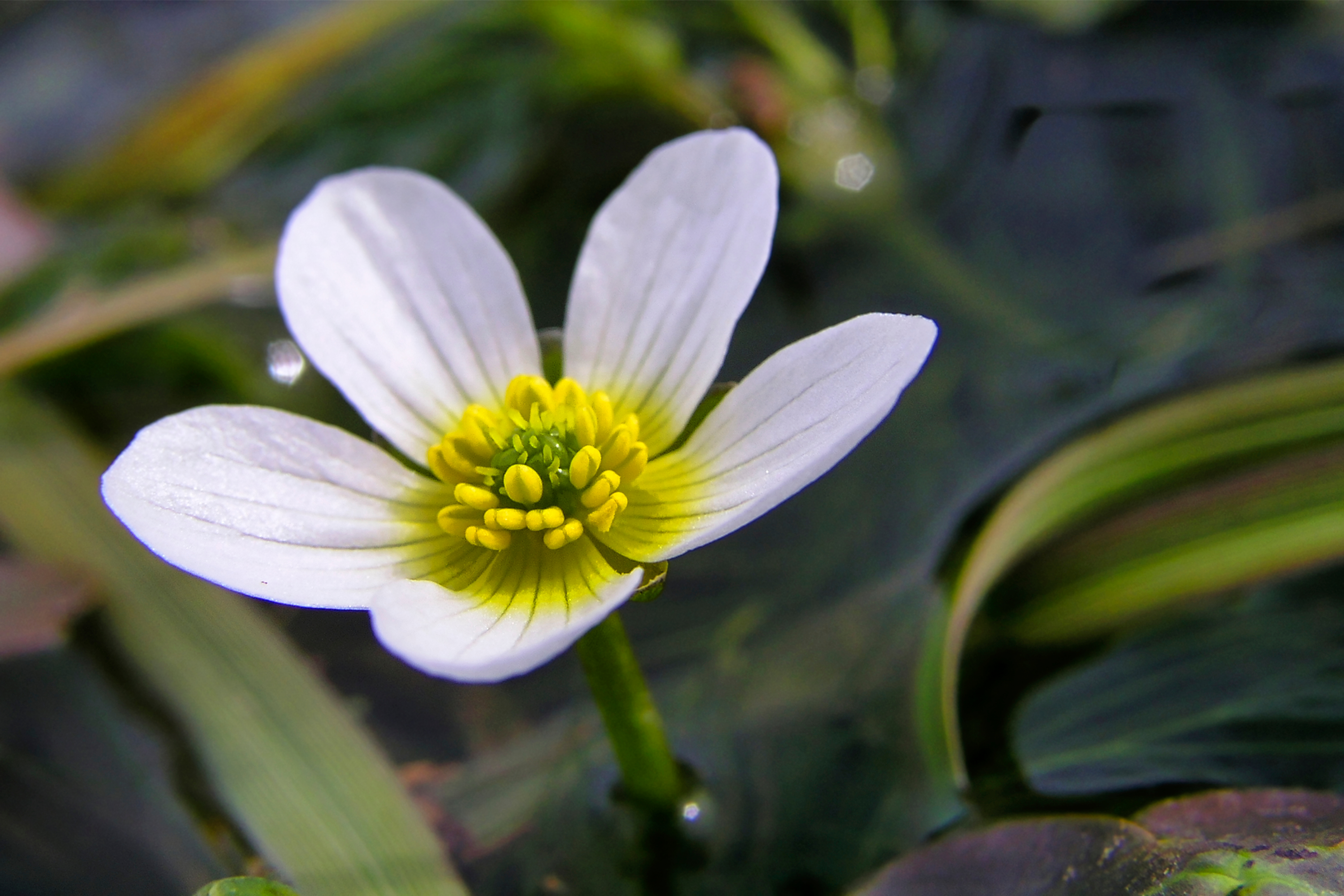River water-crowfoot
(Ranunculus fluitans)

Description
Ranunculus fluitans (the river water-crowfoot), is a species of buttercup. It is a perennial water plant, which when in favourable conditions (such as fast flowing water), can grow up to 6 m (20 ft) height. Ranunculus fluitans has no floating leaves, instead it has long and narrow, tassel-like segments. Reaching up to 30 cm (12 in) long. The long, slender stems can have up to two flower stems. The white flowers are held above the water level, they are around 2–3 cm across. They are daisy-like, with 6–8 overlapping petals around a central yellow area. It blooms in June, then the rounded seed heads become hairless fruits. It is similar in form to Ranunculus trichophyllus (thread-leaved water-crowfoot), principal differences being flower petal number- thread-leaved has only 5 petals and shorter leaves- and different preferred habitat- thread-leaved prefers slower flowing waters. It is endemic to western Europe. It was formally described by the French naturalist and botanist Jean-Baptiste Lamarck in his book 'Flore françoise' Vol.3 on page 184 in 1779. The species epithet fluitans is Latin for floating. It can be found in North Macedonia, Ireland, the United Kingdom, southern Sweden, France, Germany, Poland, Switzerland, Austria, the Czech Republic, Slovenia, Slovakia, Hungary and Italy. It grows in fast flowing waters of the UK, within England, Scotland and Wales. A Ranunculus fluitans community or Ranunculion fluitantis, defines a British plant community comprising stands of submerged vegetation dominated by clumps of Crowfoot. It is thought to be Vulnerable in Sweden and Near Threatened in Switzerland, but elsewhere it is widespread and abundant. Ranunculus is a large genus of about 600 species of flowering plants in the family Ranunculaceae. Members of the genus are known as buttercups, spearworts and water crowfoots. The familiar and widespread buttercup of gardens throughout Northern Europe (and introduced elsewhere) is the creeping buttercup Ranunculus repens, which has extremely tough and tenacious roots. Two other species are also widespread, the bulbous buttercup Ranunculus bulbosus and the much taller meadow buttercup Ranunculus acris. In ornamental gardens, all three are often regarded as weeds.
Taxonomic tree:







